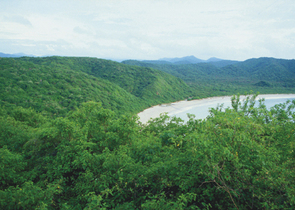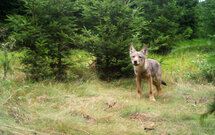Nature Conservation 2/2010 — 20. 4. 2010 — International Nature Conservation — Print article in pdf
The Machalilla National Park

The Machalilla National Park is one of nine National Parks in Ecuador and the only situated on the countrys Pacific coastline.
It protects, i.a., unique coastal dry tropical forests. The protected area was established in 1979 and covers 55,095 hectares. Since 1990 it has been listed as a Wetland of International Importance under the Ramsar Convention. Vegetation of the tropic Pacific dry forest is dominated by plants and trees from the legume family (Leguminosae), e.g. by the CockspurCoral Tree (Erythrina crista-galli), and by thorny lianas from the trumpet creeper family (Bignoniaceae). Nevertheless, the surprisingly high species richness in the bombax or kapok family (Bombababeae) is the most remarkable floristic phenomenon: in this respect, the Kapok (Ceiba pentandra) should be mentioned. The characteristic wild animal species include the White-tailed Deer (Odocoileus virginianus), Gray Brocket (Mazama gouazoubira), Black Howler Monkey (Alouatta caraya) and Lowland Paca (Agouti paca), some parrot species, terrestrial tortoises/turtles and a lot of lizard species. The Machalilla National Park is inhabited by a lot of marine bird or seabird species such as by the Blue-footed Booby (Sula nebouxii), Red-footed Booby (Sula sula) and Marked Booby (Sula dactylatra), Magnificent Frigatebird (Fregata magnificens), albatrosses, pelicans, etc.
Název připojené galerie
Quisque egestas velit non nulla fermentum, aliquet pharetra nunc malesuada. Nullam molestie vel diam non tincidunt. Sed pulvinar lacinia nunc et consectetur. Duis varius leo ac ex scelerisque, ullamcorper eleifend massa consectetur. Nullam in metus ac arcu pellentesque venenatis ac id lorem. Nulla nec ipsum sed enim sodales blandit a sit amet ex.







